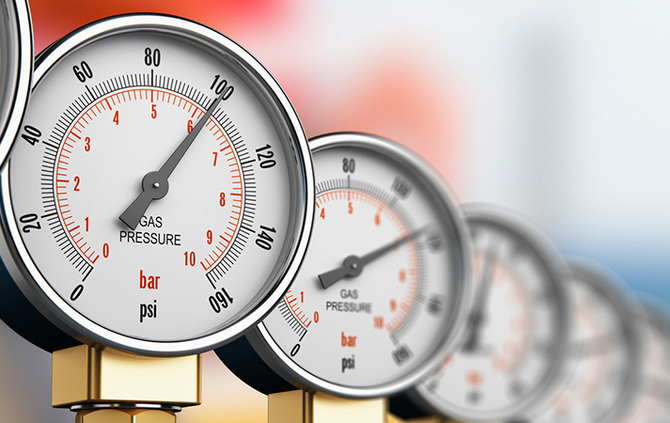 There are many methods for measuring liquid levels in industrial settings: with point level sensors like horizontal and vertically mounted float switches, with ultrasonic liquid level sensors, optical laser sensors, and many others. One such method of determining liquid levels is by measuring hydrostatic pressure.
There are many methods for measuring liquid levels in industrial settings: with point level sensors like horizontal and vertically mounted float switches, with ultrasonic liquid level sensors, optical laser sensors, and many others. One such method of determining liquid levels is by measuring hydrostatic pressure.
What is hydrostatic pressure?
Hydrostatic pressure is the pressure a fluid exerts at equilibrium on a given point within the fluid. This force is due to the mass of the fluid and the force of gravity.
How can hydrostatic pressure be used to measure liquid levels?
As depth of a given point increases, so too does the hydrostatic pressure exerted upon it by the surrounding fluid. This is because there is more fluid above the point and therefore more mass and more weight pressing down. By measuring the pressure exerted on a sensor in a given point and taking into account factors such as a liquids specific mass, depth (or more accurately the height of the liquid within the vessel) can be calculated.
What are the advantages of pressure-based liquid level sensors?
Pressure-based liquid level sensors are well-suited for rugged or hazardous conditions involving materials like oil, gas, and wastewater. This is because they use no moving parts, and can be made from a wide range of materials to meet specific chemical compatibility requirements. Pressure-based liquid level sensors are also capable of measure levels continuously, unlike some level sensors which can only determine the presence or absence of liquid at a few given points.
In the case of submersible liquid level sensors that rely on hydrostatic pressure measurement, they are capable of operating at depths that would make most other forms of level sensors infeasible.
Pressure-based Liquid Level Sensor
SMD’s FT60 downhole submersible level sensor measure liquid depth by gauging hydrostatic pressure. Especially well-suited for extremely deep vessels, the transducer is capable of relaying information via a cable as long as 2,500 feet. It is also ideal for measure the depths of agitated liquids.





